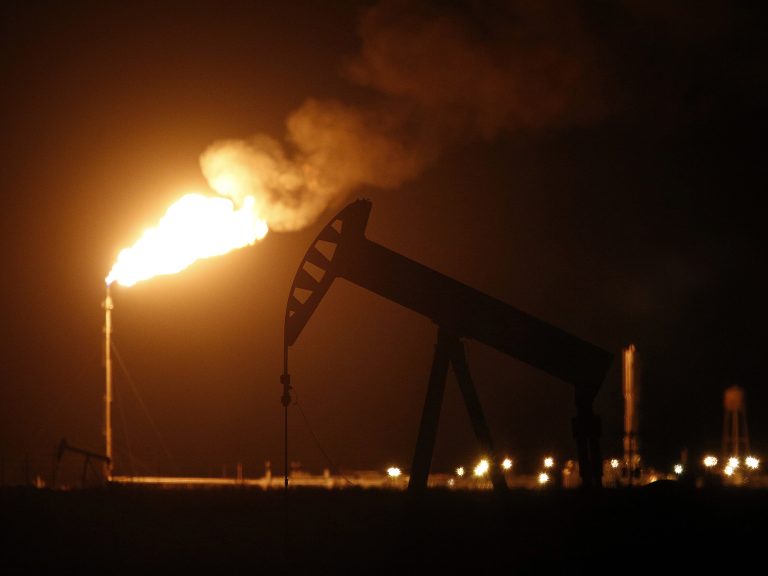LONDON, Feb 14 (Reuters) – Bank of England Governor Mark Carney called on the world’s businesses to publish strategies for cutting carbon emissions and adopting cleaner power sources by November, when world leaders meet in Scotland for U.N.-led climate talks.
“It’s not just green assets and divestment campaigns or certain things are so brown or black. Every company ultimately has to have a plan for a transition and what the opportunities are and where the risks are,” Carney said in an interview.
“For Glasgow that must be well on the path. That that is the norm. That the question doesn’t even have to be asked because companies are answering that question as part of their strategy.
“And the answer is, it’s the transition, stupid,” he said, referencing a phrase coined by former U.S. President Bill Clinton’s election strategist in reference to the U.S. economy.
Carney was speaking to Reuters a month before he leaves his nearly seven-year posting at the helm of Britain’s central bank to take a new role as the United Nations’ envoy for climate.
The Canadian banker, who disarmed the British insurance industry in 2015 when, in a speech called “Tragedy of the Horizon,” he warned of their exposure to climate-related events, has been one of the most vocal public figures to push for better supervision and disclosure of climate risk.
The Task Force on Climate-related Financial Disclosures (TCFD), which he launched in 2015, has become a global standard that more than 1,000 companies, financial firms, governments and other organizations have adhered to.
The intentions behind it also chime with a shift of emphasis by another leading central banker, European Central Bank President Christine Lagarde.
Carney was speaking to Reuters a month before he leaves his nearly seven-year posting at the helm of Britain’s central bank to take a new role as the United Nations’ envoy for climate.
The Canadian banker, who disarmed the British insurance industry in 2015 when, in a speech called “Tragedy of the Horizon,” he warned of their exposure to climate-related events, has been one of the most vocal public figures to push for better supervision and disclosure of climate risk.
The Task Force on Climate-related Financial Disclosures (TCFD), which he launched in 2015, has become a global standard that more than 1,000 companies, financial firms, governments and other organizations have adhered to.
The intentions behind it also chime with a shift of emphasis by another leading central banker, European Central Bank President Christine Lagarde.
Carney said November’s COP26 climate talks would also be a good deadline for regulators to map out how to make the TCFD framework compulsory.
“One of the things we will look at ahead at for the COP26 is ‘should we have pathways to make the TCFD mandatory?’ Not overnight, but through listing requirements or securities regulation disclosure standards,” he said.
Such an effort needs to be global, Carney said, encompassing regions laying out their own plans for cutting emissions. The European Union recently announced a 1-trillion-euro ($1.08 trillion) effort become carbon neutral by 2050, a strategy that includes introducing a new climate law by next month.
“It would be productive if other jurisdictions that potentially will have mandatory disclosure standards… used more conventional routes than legislation, such as securities regulations or listing standards. Let’s have that conversation,” Carney said.
Carney could play an outsized role at November’s summit, especially in view of a reshuffle of government and other senior positions by Prime Minister Boris Johnson.
Johnson last month sacked former energy minister Claire O’Neill from her role as president of the COP26 talks. Newly appointed Business Minister Alok Sharma was named to the position on Thursday.
Efforts by businesses, investors and financial institutions to disclose climate risk are gathering pace.
BlackRock BLK.N, the world’s largest money manager with nearly $7 trillion in assets under management, said this month that it would take a tougher view of companies that are not properly disclosing their climate risk.
This week, BP <BP.L> set out one of the oil sector’s most ambitious targets for curbing carbon emissions, saying it would reduce its greenhouse gas emissions to net zero by 2050. BP plans to give details later this year.
“Last week, very few people would have said BP was Paris-aligned,” said Carney, referring to the 2015 global climate agreement, signed in the French capital. “They’ve jumped from towards back of the queue to the front of the queue.”
($1 = 0.9225 euros)
(editing by John Stonestreet)










BONN – In the face of climate change, providing reliable supplies of renewable energy to all who need it has become one of the biggest development challenges of our time. Meeting the international community’s commitment to keep global warming below 1.5-2°C, relative to preindustrial levels, will require expanded use of bioenergy, carbon storage and capture, land-based mitigation strategies like reforestation, and other measures.
The problem is that these potential solutions tend to be discussed only at the margins of international policy circles, if at all. And yet experts estimate that the global carbon budget – the amount of additional carbon dioxide we can still emit without triggering potentially catastrophic climate change – will run out in a mere ten years. That means there is an urgent need to ramp up bioenergy and land-based mitigation options. We already have the science to do so, and the longer we delay, the greater the possibility that these methods will no longer be viable.
Renewable energy is the best option for averting the most destructive effects of climate change. For six of the last seven years, the global growth of renewable-energy capacity has outpaced that of non-renewables. But while solar and wind are blazing new trails, they still are not meeting global demand.
A decade ago, bioenergy was seen as the most likely candidate to close or at least reduce the supply gap. But its development has stalled for two major reasons. First, efforts to promote it had negative unintended consequences. The incentives used to scale it up led to the rapid conversion of invaluable virgin land. Tropical forests and other vital ecosystems were transformed into biofuel production zones, creating new threats of food insecurity, water scarcity, biodiversity loss, land degradation, and desertification.
In its Special Report on Climate Change and Land last August, the Intergovernmental Panel on Climate Change showed that scale and context are the two most important factors to consider when assessing the costs and benefits of biofuel production. Large monocultural biofuel farms simply are not viable. But biofuel farms that are appropriately placed and fully integrated with other activities in the landscape can be sustained ecologically.
Equally important is the context in which biofuels are being produced – meaning the type of land being used, the variety of biofuel crops being grown, and the climate-management regimes that are in place. The costs associated with biofuel production are significantly reduced when it occurs on previously degraded land, or on land that has been freed up through improved agriculture or livestock management.
Under the 1.5°C warming scenario, an estimated 700 million hectares of land will be needed for bioenergy feedstocks. There are multiple ways to achieve this level of bioenergy production sustainably. For example, policies to reduce food waste could free up to 140 million additional hectares. And some portion of the two billion hectares of land that have been degraded in past decades could be restored.
The second reason that bioenergy stalled is that it, too, emits carbon. This challenge persists, because the process of carbon capture remains contentious. We simply do not know what long-term effects might follow from capturing carbon and compressing it into hard rock for storage underground. But academic researchers and the private sector are working on innovations to make the technology viable. Compressed carbon, for example, could be used as a building material, which would be a game changer if scaled up to industrial-level use.
Moreover, whereas traditional bioenergy feedstocks such as acacia, sugarcane, sweet sorghum, managed forests, and animal waste pose sustainability challenges, researchers at the University of Oxford are now experimenting with the more water-efficient succulent plants. Again, succulents could be a game changer, particularly for dryland populations who have a lot of arid degraded land suitable for cultivation. Many of these communities desperately need energy, but would struggle to maintain solar and wind facilities, owing to the constant threat posed by dust and sandstorms.
In Garalo commune, Mali, for example, small-scale farmers are using 600 hectares previously allocated to water-guzzling cotton crops to supply jatropha oil to a hybrid power plant. And in Sweden, the total share of biomass used as fuel – most of it sourced from managed forests – reached 47% in 2017, according to Statistics Sweden. Successful models such as these can show us the way forward.
Ultimately, a reliable supply of energy is just as important as an adequate supply of productive land. That will be especially true in the coming decades, when the global population is expected to exceed 9.7 billion people. And yet, if global warming is allowed to reach 3°C, the ensuing climatic effects would make almost all land-based mitigation options useless.
That means we must act now to prevent the loss of vital land resources. We need stronger governance mechanisms to keep food, energy, and environmental needs in balance. Failing to unleash the full potential of the land-based mitigation options that are currently at our disposal would be an unforgiveable failure, imposing severe consequences on people who have contributed the least to climate change.
Bioenergy and land-based mitigation are not silver bullets. But they will buy us some time. As such, they must be part of the broader response to climate change. The next decade may be our last chance to get the land working for everyone.